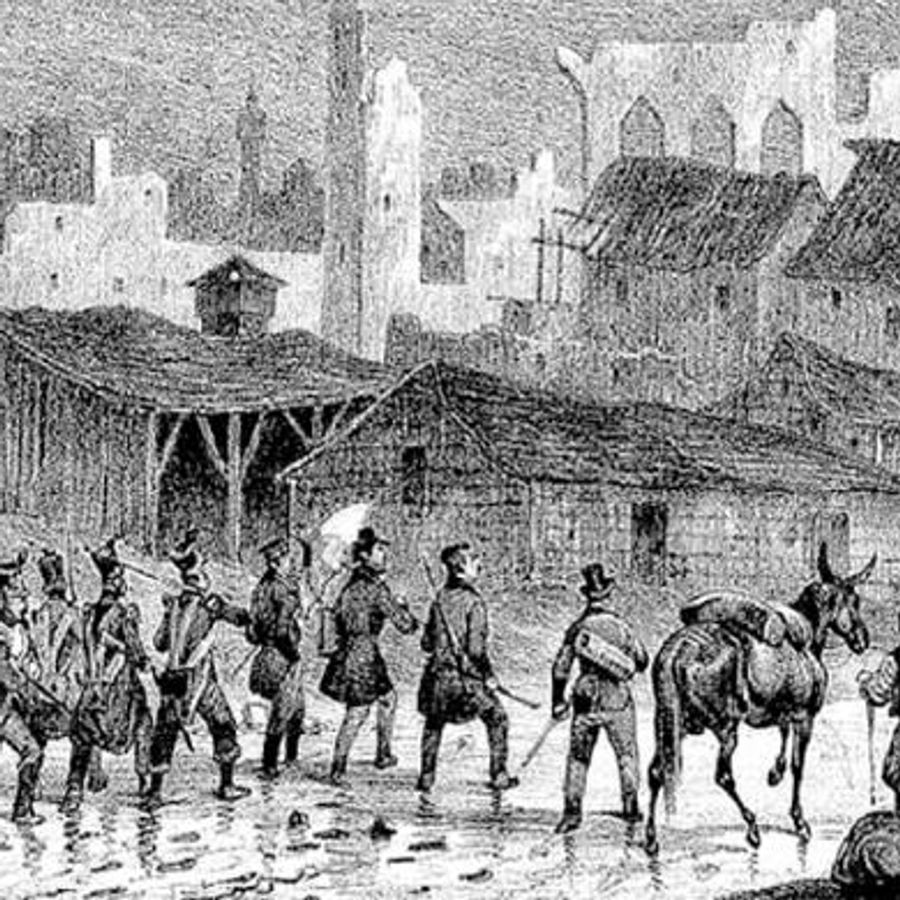
[Science News] - Collecting plants in times of war
Throughout history, wars and military expeditions have often gone hand in hand with scientific and biological discoveries. As armies advanced into unfamiliar territories, accompanying scientists gathered new knowledge about fauna, flora, and geography. The Herbarium Henri Van Heurck, preserved at Meise Botanic Garden, contains plants collected during two French military campaigns at the end of the 18th and the beginning of the 19th century.
Napoleon’s Egyptian Campaign (1798–1801)
From 1798 to 1801, Napoleon Bonaparte led a military campaign in Egypt against a British-Ottoman coalition. The objective was to block Britain’s overland access to India through eastern conquests, as part of the broader conflict between Revolutionary France and Great Britain.
Napoleon was accompanied by 167 scholars, artists, architects, and engineers. Among them was the renowned French botanist Alire Raffeneau-Delile (1778–1850). Although the campaign was not a military success for Napoleon, it yielded major scientific breakthroughs. One of the most famous discoveries was the Rosetta Stone, found in Rosetta (now El Rashid), which enabled the deciphering of Egyptian hieroglyphs in 1822.
During the expedition, Delile collected various plants that were new to science, including Picris altissima. A type specimen of this species is preserved in the Van Heurck herbarium. After the campaign, Delile was appointed director of the Cairo botanical garden.
However, the human cost of the campaign was high: 15,000 French soldiers were killed or wounded, while British-Ottoman casualties are estimated at around 50,000.
The Morea Expedition (1828–1833)
Another substantial collection in the herbarium was gathered during the Expédition de Morée (1828–1833), a military mission aimed at supporting the First Hellenic Republic (1822–1832) in its fight against Ottoman rule.
‘La Morée’ is the old French name for the Peloponnese, the largest peninsula of Greece. The expedition’s scientific commission was led by officer and botanist Jean-Baptiste Bory de Saint-Vincent (1778–1846), who stayed in the Peloponnese from March to November 1829.
The pre-printed labels on the collected plants often mention “Morée” (the collection region) and “Chaubard.” However, Louis Athanase Chaubard (1781–1854) was not the collector, despite being incorrectly cited as such in some databases and publications. He studied the collection and contributed to the publication on the flora of the Peloponnese under the direction of Bory de Saint-Vincent.
During his journey, Bory was accompanied by military artist Prosper Baccuet (1797–1854), who produced illustrations of landscapes and collection sites.
The military operation claimed the lives of 1,500 French soldiers. No reliable figures exist for Ottoman losses.
 |
.jpg) |
.jpg) |
|
Type material of Picris altissima Delile from the herbarium of F.W. Sieber, collected by Delile in Alexandria (ad Alexandriam). |
Illustration from the protologue of Picris altissima in Description de l'Égypte, ou, Recueil des observations et des recherches qui ont été faites en Égypte pendant l'expédition de l'armée française (by Delile).
|
Title page of the publication on the plants collected during the Morea expedition. |
.jpg) |
|
The Battle of Alexandria by Philip James de Loutherbourg. De Loutherbourg (1740–1812) was an English painter of French-Swiss origin.
|
.jpg) |
| Label uit de collectie “Morée” (herbarium Van Heurck) van het type-exemplaar van Convolvulus alceifolius Bory & Chaub. Verzameld te Modon (het huidige Methoni) |
.jpg) |
|
Scientists, soldiers, and Greeks arrived in Tripolitza (present-day Tripoli) in 1829. Note the man (second from the right) carrying a botanical tin. Engraving by Prosper Baccuet. |



